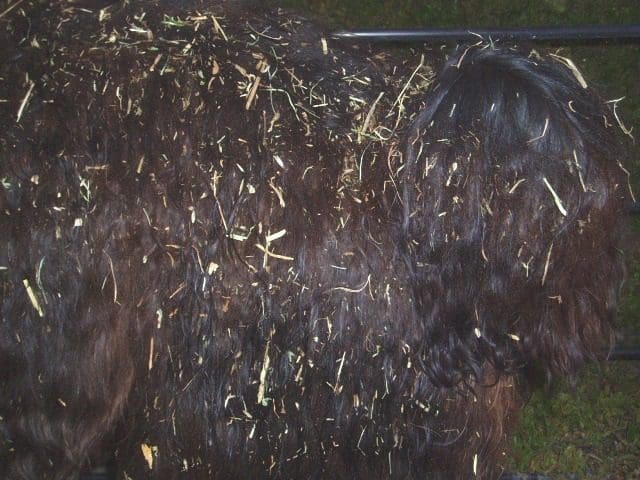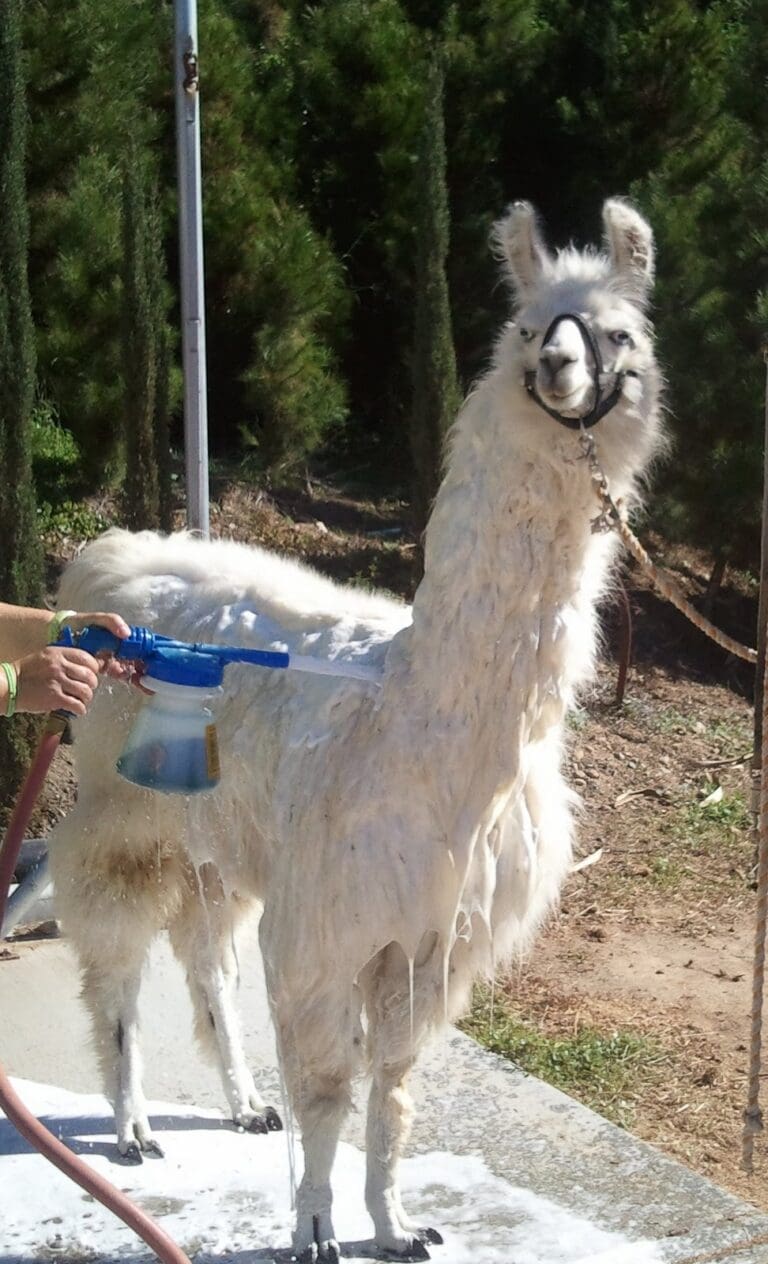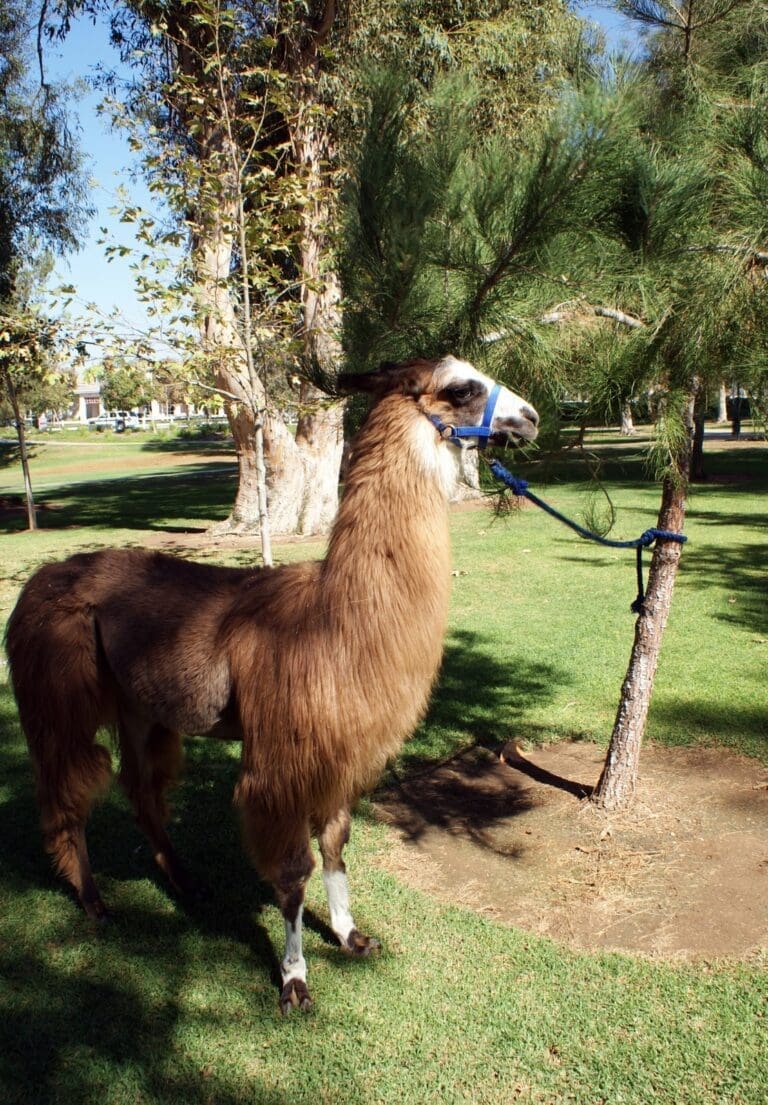Barack O’Llama loves getting dirty, which is unusual for a llama!
He’ll walk through muddy puddles, while his stable mates will jump over or go around them. And “Barry” will roll in hay, which sticks to his coat. He’s not bothered a bit by looking messy. Como T. Llama and Bahama Llama, however, prefer to be clean, and they’ll nibble the back of Mama Llama’s shirt asking to be brushed!
Llamas grow wool coats that are lightweight, medium-weight or heavyweight, and ShangriLlama’s pack represents all three coat types. Together, the llamas of ShangriLlama also represent most of the wool colors found in this species.
Barack O’Llama has heavy wool, which explains why hay sticks to him. Maybe it’s good that Barry doesn’t mind being dirty, because here’s what his coat looked like today before Mama Llama brushed him:

Dalai Llama grows a lightweight wool coat, which is white and shows dirt very quickly. A month ago, Mama Llama hired a llama groomer to bathe Dalai. It took two hours and the results lasted barely a day before Dalai looked a bit yellowed (if you know what I mean) in certain spots on his coat. Look at poor Dalai Llama in the middle of his soapy bath!

Good thing that Como T. Llama has a medium-weight wool coat! It only needs to be lightly brushed to remove debris, and this takes just a few minutes–although Como wishes it would last all day, because he adores being brushed.

Pajama Llama and Bahama Llama have lightweight coats like the Dalai Llama. Simply brushing them with your hand will make their coats look spotless. Don’t let Bahama’s woolly mane fool you. He really does have lightweight wool on the parts of his coat that are used for garments and accessories. His luscious mane serves only to help him masquerade as Santa Claus every December.
Llamas actually have two coats: the outer coat that catches a lot, a little or no debris, depending on the wool type; and the inner coat, which serves to keep the llama warm. The outer wool is great for rugs, blankets and llama leads (like leashes, only longer). The inner wool is much finer and more valuable, so it is used to make luxurious garments and accessories. In southern California, llamas are shorn each May to keep them cool for the summer, which still gives them time to grow back their wool when colder weather sets in.
There’s another type of llama wool that is not lightweight, medium-weight nor heavyweight. It’s called suri, which means “curly llama” in Peruvian. Suris need a special brush, so their gorgeous locks aren’t unlocked when cleaning them. Mama Llama has been llama-shopping for quite some time at private zoos near her ranch and out of state, too, for a suri llama. But only one in ten llamas is born a suri, and so far, there hasn’t been a good suri candidate. But someday, a suri will live at ShangriLlama.
Llamas that aren’t curly are called silky (huacaya, in Peruvian). And whether curly or silky, llama wool has almost no lanolin (oil) in it, so it hypoallergenic! Because the wool lacks oil, it should only be washed twice a year, unless it is necessary to wash it more, as in Barack O’Llama’s case. And then, spot cleaning is best.
Chalk up two more reasons to love llamas: they won’t make you sneeze and you don’t have to wash them often.
Happy Trails!
